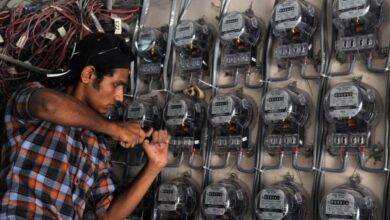Sustainable Dairy Farming

Running a dairy farm means juggling a lot—your herd, your land, your costs, and your time. But if your farm is going to stay productive, profitable, and resilient, it also needs to be sustainable.
Sustainable dairy farming isn’t about ticking boxes. It’s about making better use of resources, improving animal welfare, and reducing your environmental impact, all while producing high-quality milk from healthy dairy cows. The environmental benefits include reducing the carbon footprint, preserving biodiversity, and promoting efficient resource management, ensuring a healthier planet for future generations.
Here’s how to move towards a more sustainable future, step by step.
Introduction to Dairy FarmingDefinition and Importance
Dairy farming is an agricultural practice that involves the production of milk and other dairy products from dairy cows. It is a vital part of the global food system, providing essential nutrients and livelihoods for millions of people around the world. Dairy farmers play a crucial role in maintaining the health and well-being of their cows, as well as protecting the environment and conserving natural resources. The dairy industry is committed to sustainable dairy farming practices, aiming to reduce greenhouse gas emissions, improve soil health, and promote biodiversity. Many dairy farmers are adopting innovative techniques, such as regenerative practices, renewable energy sources, and efficient water use, to minimize their environmental impact and ensure a sustainable future for their farms.
1. Feed Efficiency and Rations
Feed is one of your biggest inputs. Improving feed efficiency—how well cows convert feed into milk production—reduces waste and supports herd health. High-quality forage, the right feed rations, and targeted feed additives can improve digestion, cut costs, and lower methane emissions. Incorporating by-products like almond hulls into the feed can also help reduce food waste and provide essential nutrients.
Cows digest some feeds better than others. Adding by-products like citrus pulp or brewers’ grains can help reduce food waste and improve feed quality without sacrificing nutrition. That’s good for the cow—and for your bottom line.
2. Cow Manure: From Waste to Resource
Managed correctly, cow manure is a natural fertiliser that boosts soil health and reduces reliance on synthetic inputs. Dried manure can be used as bedding and fertilizer, providing environmental benefits by recycling waste and economic advantages by reducing costs. Apply it during the growing season, store it well, and consider separating solids for use as bedding.
Used efficiently, manure can improve your pasture, protect water usage levels, and save you money. It also helps lower your farm’s carbon footprint by recycling nutrients back into the soil.
3. Healthy Soil, Healthy Farm
Your soil is your foundation. It supports your grass, your herd, and your yield. The integration of new technology into regenerative practices enhances traditional methods, allowing farmers to improve soil health sustainably. Focus on regenerative practices like planting cover crops, nitrogen-fixing legumes, and rotating fields. These build organic matter, improve biodiversity, and help prevent erosion.
Good soil structure also helps retain water, which becomes crucial during dry spells or unpredictable weather—something more dairy farmers are facing due to climate change.
4. Smart Grazing and Best Management Practices
Rotational grazing keeps pastures healthy and improves grass growth. Move cows often to avoid overgrazing and compaction. Simple management practices like walk-over weighing and herd health monitoring can also support animal welfare and reduce emissions.
Adopt best management practices suited to your farm. Start small—improving grazing plans or switching to herbal leys can make a noticeable difference.
5. Energy Use and Renewable Options
Milking, cooling, and lighting all use energy. The Innovation Centre for U.S. Dairy plays a crucial role in promoting renewable energy and sustainability in the dairy industry. Switching to solar panels, using low-energy vacuum pumps, and insulating milk tanks can all reduce your electricity use. Many dairy farms are also exploring renewable energy sources to cut running costs and emissions.
Energy-efficient choices support both sustainability goals and profitability. They also lower your farm’s greenhouse gas emissions, helping the wider dairy sector shift towards a lower-carbon future.
6. Reducing Emissions Without Losing Productivity
Your farm contributes to greenhouse gas output—mainly methane, carbon dioxide, and nitrous oxide. But it also holds part of the solution.
Focus on the simple wins: improve feed production, reduce excess nitrogen use, and manage manure better. These all reduce your GHG emissions, improve sustainability, and support sustainable development—without compromising output.
8. Animal Welfare and Dairy Cows
Animal welfare is a top priority for dairy farmers, who recognize the importance of treating their cows with respect and care. Dairy cows are intelligent, social animals that require a safe and healthy living environment to thrive. Many dairy farmers are implementing best management practices, such as providing comfortable living conditions, ensuring access to fresh water and nutritious feed, and promoting positive interactions between cows and handlers. The use of sexed semen and other innovative breeding technologies is also helping to improve the welfare of dairy cows, by reducing stress and promoting more efficient milk production. By prioritizing animal welfare, dairy farmers can help to ensure the long-term sustainability of their farms and the dairy industry as a whole.
9. Water ConservationEfficient Use of Resources
Water conservation is essential for dairy farmers, who rely on this precious resource to produce milk and care for their cows. Efficient use of water is critical, particularly in areas where water scarcity is a concern. Many dairy farmers are adopting innovative technologies and practices, such as drip irrigation and water recycling, to minimize their water usage and reduce their environmental impact. The use of cover crops and crop rotation can also help to improve soil health and reduce erosion, which can help to conserve water and prevent pollution. By promoting water conservation and efficient use of resources, dairy farmers can help to ensure a sustainable future for their farms and the environment.
Real-World Examples
Case Study: G and S Dairies’ Commitment to Sustainability
A farm known for its focus on sustainable dairy farming practices, has implemented a range of energy-saving initiatives, including the use of solar panels and regenerative grazing techniques. Dairy enterprises are adapting their fertilization practices to reduce environmental impact by reducing artificial nitrogen fertilizer usage and utilizing nutrients in slurry, farmyard manure, and nitrogen-fixing legumes. These efforts have helped reduce their carbon footprint while improving both herd health and soil quality. By continuously refining their feed efficiency and reducing greenhouse gas emissions, G and S Dairies is an example of how integrating sustainability can lead to long-term farm success.
Useful Benchmarks and Figures
- Rotational grazing can increase pasture yield by up to 30%.
- Cover crops can improve soil organic matter by 1–2% in three years.
- A single cow’s manure output = around £30 in fertiliser value per year.
- Renewable energy like solar can reduce energy bills by 40–60%.
- Better feed efficiency can cut methane emissions by 10–20%.
FAQs: Quick Answers for Busy Farmers
Q: Do I need to go organic to be sustainable?
A: No. You can adopt sustainable dairy farming practices without being organic. It’s about efficient use of resources, not certification.
Q: Is it expensive to go green?
A: Not always. Many changes—like better grazing or using natural fertiliser—save money. Larger upgrades like solar often have grants available.
Q: What’s the quickest way to reduce my farm’s emissions?
A: Improve feed quality, manage manure properly, and reduce fertiliser losses. These are practical, measurable actions.
Q: Where should I start?
A: Look at your soil first. Then review your energy use, your management practices, and your herd’s overall health. Tackle one area at a time.
- Sustainable dairy farming contributes to global goals such as reducing greenhouse gas emissions and conserving biodiversity. These practices not only support broader environmental objectives but also enhance profitability and consumer trust.
Final Thoughts
Sustainable dairy farming isn’t about ticking every box—it’s about steady progress. Whether you’re planting cover crops, upgrading to renewable energy, or improving feed rations, each step gets you closer to a more resilient, efficient farm. Ensuring sustainable practices is crucial for the next generation, as it helps preserve the land and resources for future farmers.
Farming changes fast. Stay curious. Stay focused. Look after your dairy cows, your land, and your future. And remember—small improvements often lead to big results.



